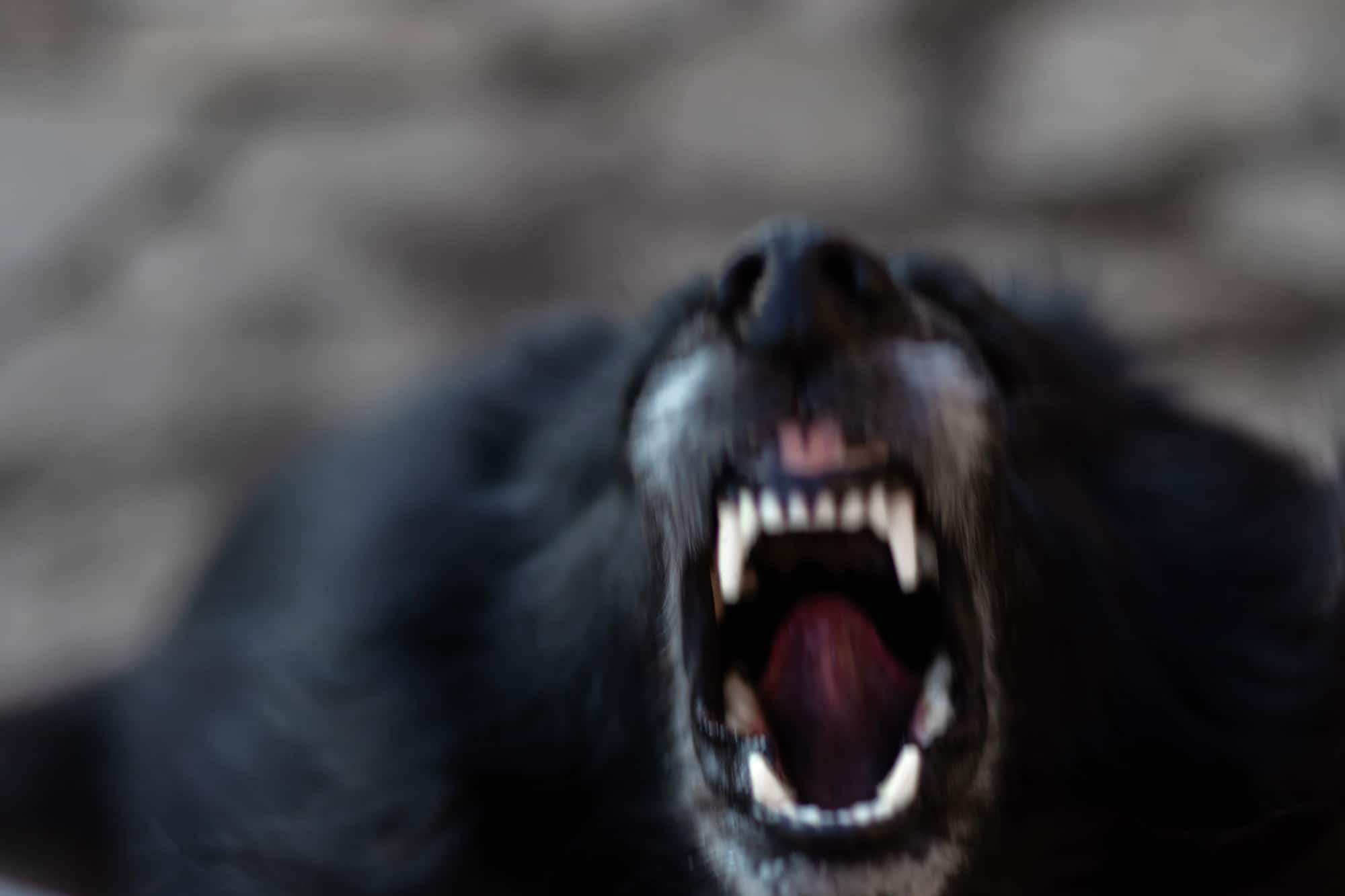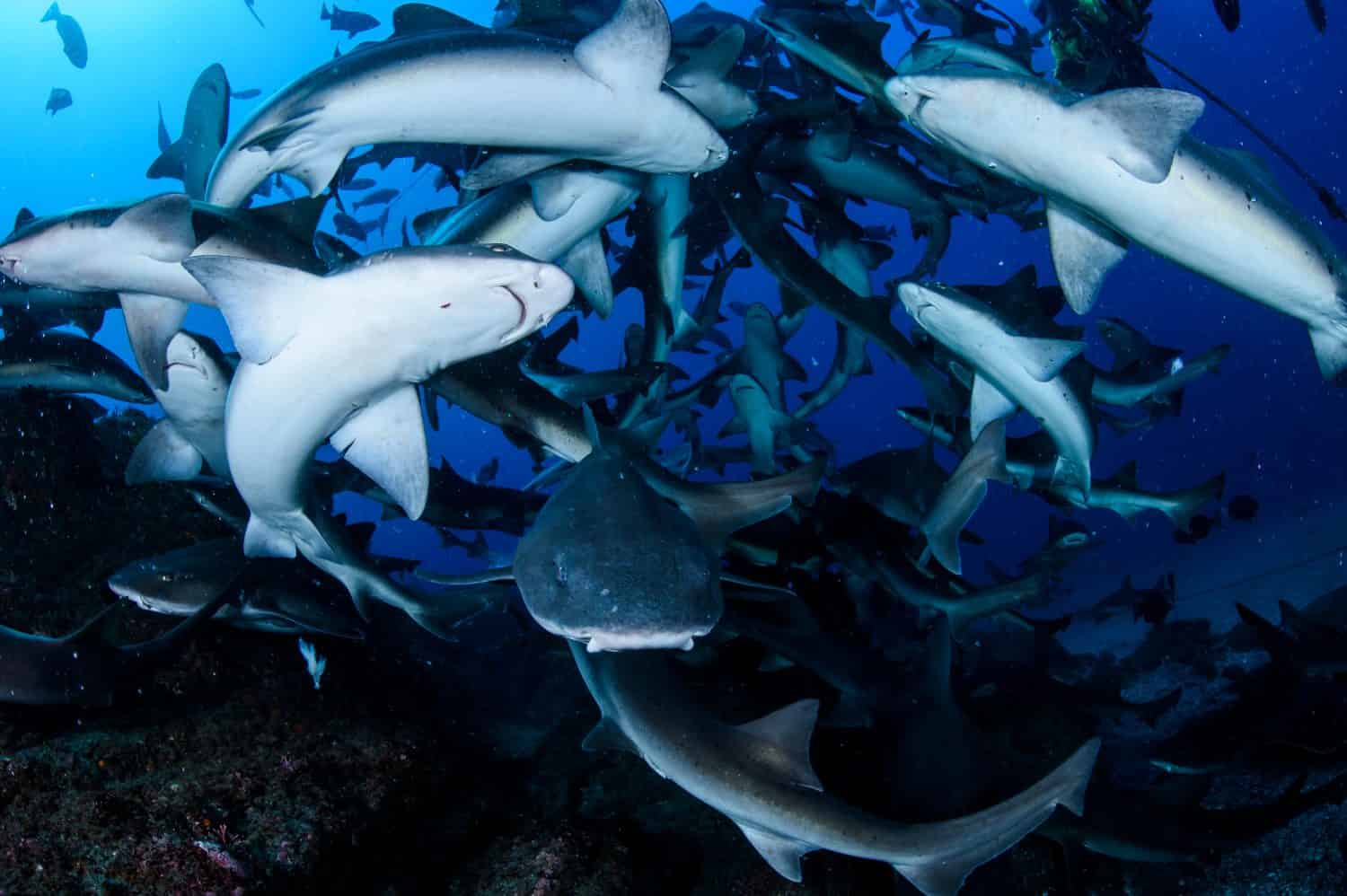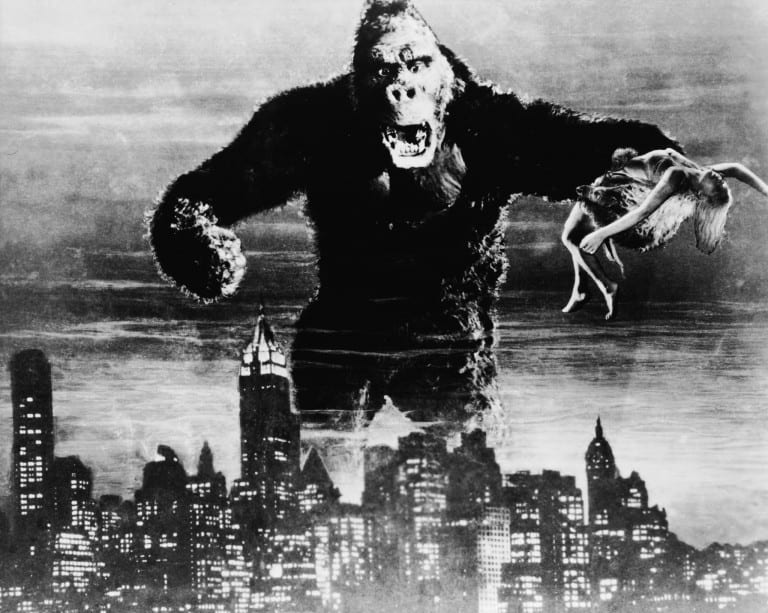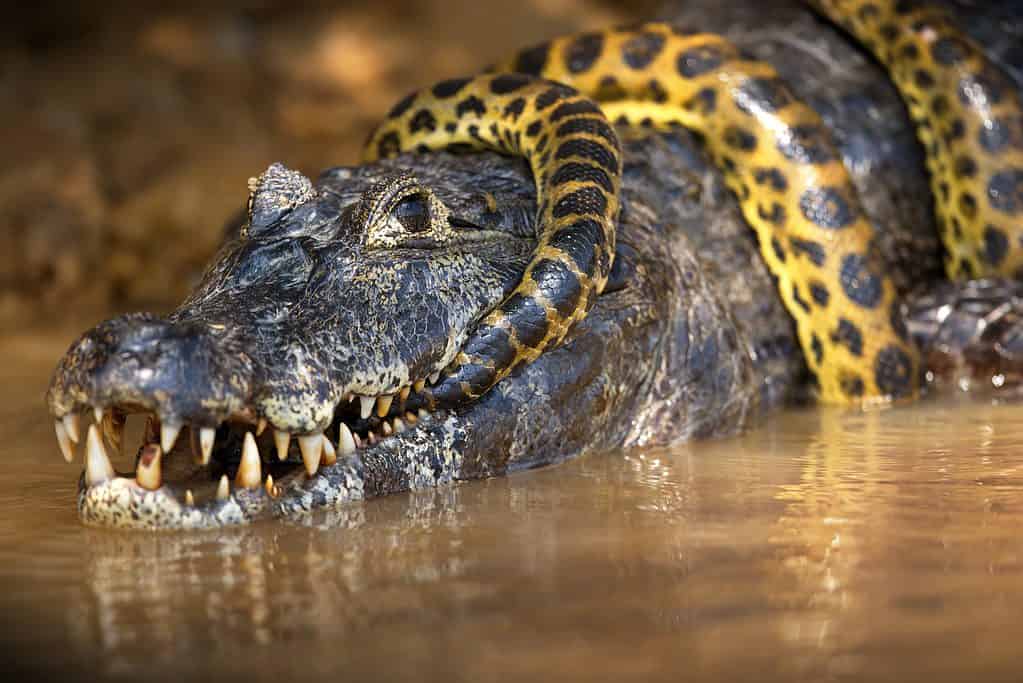When people think about animal films, most would think of all the Disney films they saw growing up. Mickey and Minnie Mouse, Goofy and Max, Donald and Daisy Duck, Winnie The Pooh, Bambi, most of the cast from The Jungle Book, and so on. Animal movie stars usually are great choices to appeal to younger audiences as they bring warmth and joy like pets do in real life. Some of the best animal movie stars are also synonymous with older demographics. This article will cover eight unique animal movie stars in animated and real-life adaptations. It will also talk about the type of animals they are.
1. Mordecai & Rigby From “Regular Show: The Movie”

Mordecai and Rigby are the main stars in the
Regular ShowTV series along with the show’s film.
©Gage Skidmore from Peoria, AZ, United States of America, CC BY-SA 2.0, via Wikimedia Commons – License
The first entry on this list covers a blue jay (Mordecai) and a raccoon (Rigby). In the Regular Show series, Mordecai and Rigby are two park groundskeepers who love to avoid working. Due to their lazy ways, the duo find themselves in plenty of adventures. In the movie, the duo along with their coworkers, have to defeat an evil volleyball coach to save the universe.
A blue jay is an expressive animal that can be found in many of the eastern, southern, and central parts of the United States. Although they have brown feathers, blue jays are a rare blue land animal. They can also imitate hawk calls and have a lineage that dates back twenty-five million years. Their scientific name is the Cyanocitta cristata and belong to the Corvidae family.
A raccoon’s scientific name is the Procyon lotor. They mostly eat fish, nuts, and berries. Raccoons can run up to fifteen miles per hour and typically weigh seven to nineteen pounds. The Powhatan tribe in Virginia made their name as the name comes from a Powhatan term that means “animal that scratches with its hands” and was a food source for Native Americans and European colonizers. Raccoons are considered very smart animals as their small paws are highly sensitive. How so? The paws contain four to five times as many sensory cells compared to the rest of their bodies. They’re also distantly related to bears.
2. Cocaine Bear From “Cocaine Bear”

Cocaine Bear is an American Black Bear
©lassi meony/ via Getty Images
Speaking of bears, let’s talk about Cocaine Bear. The premise of the film has Sharknado levels of insanity, but it’s based on a true story (believe it or not). Cocaine Bear’s story is based on the story of an American Black Bear who consumed several packs of cocaine that were airdropped during a drug smuggling operation that went wrong. The real story in Blue Ridge, Georgia was less gruesome. What happened in the real story was that a drug smuggler accidentally airdropped over twenty million dollars of cocaine into Georgia’s Chattahoochee-Oconee National Forest. Police officers found a black bear that helped itself to the packages before they could find it and unfortunately overdosed on the packages.
The American Black Bear has short claws that make them great tree climbers as it did in the film! A black bear can weigh between 220-600 lbs and run up to a top speed of thirty miles per hour. They eat fish, berries, and nuts, not cocaine. The black bear is the most widespread bear species in North America. Surprisingly enough, they’re more related to the Asian Black Bear than the Brown Bear or a Polar Bear.
3. Buddy From “Air Bud”

Air Bud is a golden retriever.
©gorodenkoff/ via Getty Images
Back in 1997, Disney released a film starring one of man’s best friends. The sports comedy film Air Bud revolved around a Golden Retriever that was taken in by a family. Eventually, it was revealed that the dog knew how to hoop and led an injury-plagued team to a basketball championship. There are no rules prohibiting animals from playing basketball, you know?
Buddy, better known as Air Bud, is a loved Golden Retriever in and out of the film. The Canis lupus is mostly based in Europe, but they can be found in North America. It’s a dog breed with a recognizable golden/orange fur coat that can help the animal tolerate cold weather during hunting season. Like Air Bud, these dogs are great to have as pets as they’re super family and kid-friendly. There are several different types of Golden Retrievers such as the Beago, Golden Saint, Golden Doodle, Golden Shepherd, and Golden Pyrenees. This breed can be a tall species as the dog can stand two feet tall and can weigh between fifty-five to seventy-five pounds.
4. The Various Sharks From “Sharknado”

Image: Martin Voeller, Shutterstock
©Martin Voeller/Shutterstock.com
It’s time to talk about the cult classic, Sharknado. What happens in Sharknado? Well, in the first one, a freak hurricane that scoops up sharks from Mexican waters hits Los Angeles and floods the city. And people fend for themselves and their families in the film. The sequels get even crazier and crazier, but the main antagonists in the series are the sharks. But, what types of sharks were in the cult classic film series? Great Whites and Hammerhead Sharks.
Great White Sharks
The Great White Sharks are one of the kings of the oceans. They prey on seals, dolphins, and sea lions. Like the shark from Jaws, they’re famous “man-eaters” as they cause half of the annual amount of shark attacks. Great White Sharks can grow up to twenty-six feet long! These sharks have over three hundred teeth used to cut through some of the toughest materials and animal flesh around. Although they’re a famous shark species, possibly thanks to the films Jaws and Sharknado, they’re not as common as other shark species.
Hammerhead Sharks
Hammerhead Sharks are very noticeable for their long rectangular heads. The Spyhnridae species has a 360-degree view thanks to its unique anatomy. Not many animals in the ocean pose a threat to Hammerhead Sharks aside from the Great White Shark and Killer Whales. They live along the coastline of many countries and prefer warmer waters. Their family name, Sphyra, is Greek for hammer.
Sharks in general have survived many mass extinctions as they trace back to living for more than 450 million years. They have also survived many bad movie adaptations about them. There is a unique study on the effects of sharks before, during, and after a hurricane in the Bahamas and Miami, Florida to check out. The study was conducted during Hurricane Matthew in 2016 and Hurricane Irma and 2017. Although no “sharknados” actually happened, some species were unwavering by the impending storms. Some of the shark populations actually increased tremendously after the storms!
5. King Kong From “King Kong”

A sensational promotional image for the 1933 feature film
King Kongdepicts a massive gorilla towering over New York City, while holding a woman.
©Warner Bros currently owns the rights to the 1933 version of “King Kong”, following the demise of RKO in 1959., Public domain, via Wikimedia Commons – License
In 1933, the world was first introduced to King Kong. The monster horror classic is ninth on Rotten Tomatoes’ all-time top horror films. King Kong‘s premise focuses on a massive gorilla being captured from Skull Island and shipped over to New York City. Shortly after, King Kong runs wild and holds a woman captive in New York City. The success of the first film influenced many other remakes, sequels to those remakes, spin-offs, and video games.
King Kong is a gorilla-like kaiju- a giant monster that’s seen in Japanese films and sci-fi programs. Gorillas come from Africa and are currently on the verge of being an endangered species. Their natural environments are in rainforest areas and jungles. They’re omnivores but their diet is mostly vegetarian consisting of plants and fruits. They are prey to leopards, humans, and crocodiles.
Gorillas are the world’s biggest primate species in regard to physical stature. fortunately enough, they don’t grow as large as Kong, but they can weigh anywhere between 220-440 lbs. About ninety-eight percent of the DNA in gorillas is similar to that of a human’s DNA structure. They have better communication skills than people may think and are four times stronger than the average human. They also can weigh twice as much as the largest orangutans. An adult gorilla can bend an iron bar with its own bare hands.
6. Anaconda From The “Anaconda” Film

A closeup of an anaconda snake wrapped around an
alligator
in a pond in Pantanal, Brazil.
©Wirestock Creators/Shutterstock.com
An anaconda is famous for being a very enormous snake. The film Anaconda is pretty self-explanatory: a National Geographic film crew is taken hostage by a crazy hunter who wants to capture a deadly anaconda snake. Anaconda had the likes of Danny Trejo, Jennifer Lopez, and Ice Cube as actors in the film. The success of the horror film spawned a film series and even a Nicki Minaj song.
These types of snakes are mainly found in South America. They prey on rodents, fish, and amphibians. The anaconda is also the heaviest snake in the world as one can weigh up to 550 lbs! Anacondas were first discovered by Westerners in the 17th century. The Latin name for the Green Anaconda (Eunectes murinus) has a double meaning. The first part means “good swimmer” and the second part means “of mice”. Why? It was first thought that anacondas only ate mice.
In appearance, anacondas have an olive and yellow color to them with splotches running down along their bodies. The female anaconda grows much larger than the male anaconda. Male anacondas rarely grow past fourteen feet meanwhile grown female anacondas can get to over twenty feet long and weigh over two hundred pounds. Unlike the film Anaconda and other horror film snake depictions, real-life anacondas or boa constrictors do not prey on humans; they actually avoid humans.
7. The Ants Characters In The Film “Antz”

The poster for the movie “Antz”
©antz, Public domain, via Wikimedia Commons – License
In 1998, Dreamworks released a long-standing film that many nineties and some 2000s babies remember seeing on their grandparents’ VHS/DVD shelves with Antz. The plot of the story goes as this: Z, a worker ant, is seeking individuality in the communal work-ethic culture of the fellow ants around him. He falls in love with the ant princess Bala and attempts to save the ants from an evil ant general seeking to wipe out the worker ant population.
What type of ants were in the film? Although most of the ants appeared to be red ants, some of the ants were named after different ant types.
- Bala is a Costa Rican name that natives from there give to bullet ants or Paraponera clavata
- Barbatus is named after the red harvester ant or Pogonomyrex barbatus
- Cutter is a reference to leaf-cutter ants or Genera atta
- Weaver is a reference to the weaver or green ant
- Azteca’s name relates to the Azteca andreae species
- The film’s main antagonist, General Mandible, is a reference to the name of an ant’s jaw, the mandible.
8. What Type Of Animal Is Godzilla Exactly?
We already talked about one kaiju in King Kong, but let’s talk about Godzilla, the film, and the animal. Sure we know Godzilla is a radioactive dinosaur, but what type of dinosaur is Godzilla? Before we get to that, let’s briefly talk about the plot of the original 1954 film. An underwater hydrogen bomb test awakens an unknown kaiju from a centuries-long rest and terrorizes Japan. Sound simple enough, right?
Now let’s talk about something more complex: what type of animal is Godzilla? Many decades passed and even many more film sequels were made about Godzilla. That also means many debates were had about what animal Godzilla is. Some people said that he’s not based on any specific animal. Then there are some theories as to what Godzilla may be.
Galapagos Marine Iguana
The Galagos Marine Iguana is called “The Harmless Godzilla” for the Amblyrhynchus cristatus species’ similar appearance to the kaiju. They can be found in almost every Galapagos island amongst coastal and lava rocks on the beaches. Male and female Galapagos Marine Iguanas can vary in size. An average female iguana can grow up to two feet and male marine iguanas grow to just over four feet. They live in large colonies and dig their nets for eggs on the beaches. Their main predators are dogs and cats on the beaches.
A Dinosaur, But Which One?
Some people argue that Godzilla is just another dinosaur based on its body. The Smithsonian Magazine covered this in an article thanks to research by a paleontologist. It was no easy feat as mutation to Godzilla in the film series at that point was considered. However, there were enough clues to piece together what Godzilla is. It has a complex structure. The paleontologist Ken Carpenter identified Godzilla at first by its head and said it’s in the abelisaurids-dinosaur group like Carnotaurus and the Skorpiovenator who were once cousins of Ceratosauria. Those dinosaur species are very ancient and it’s amazing to think about when you consider that the species Godzilla “can be based on this theory” AND survive atomic bombs, is amazing. Yet, to wrap your mind around it would be a headache and best left to the movie’s mythology.
The photo featured at the top of this post is © iStock.com/nearandfar
Thank you for reading! Have some feedback for us? Contact the AZ Animals editorial team.






